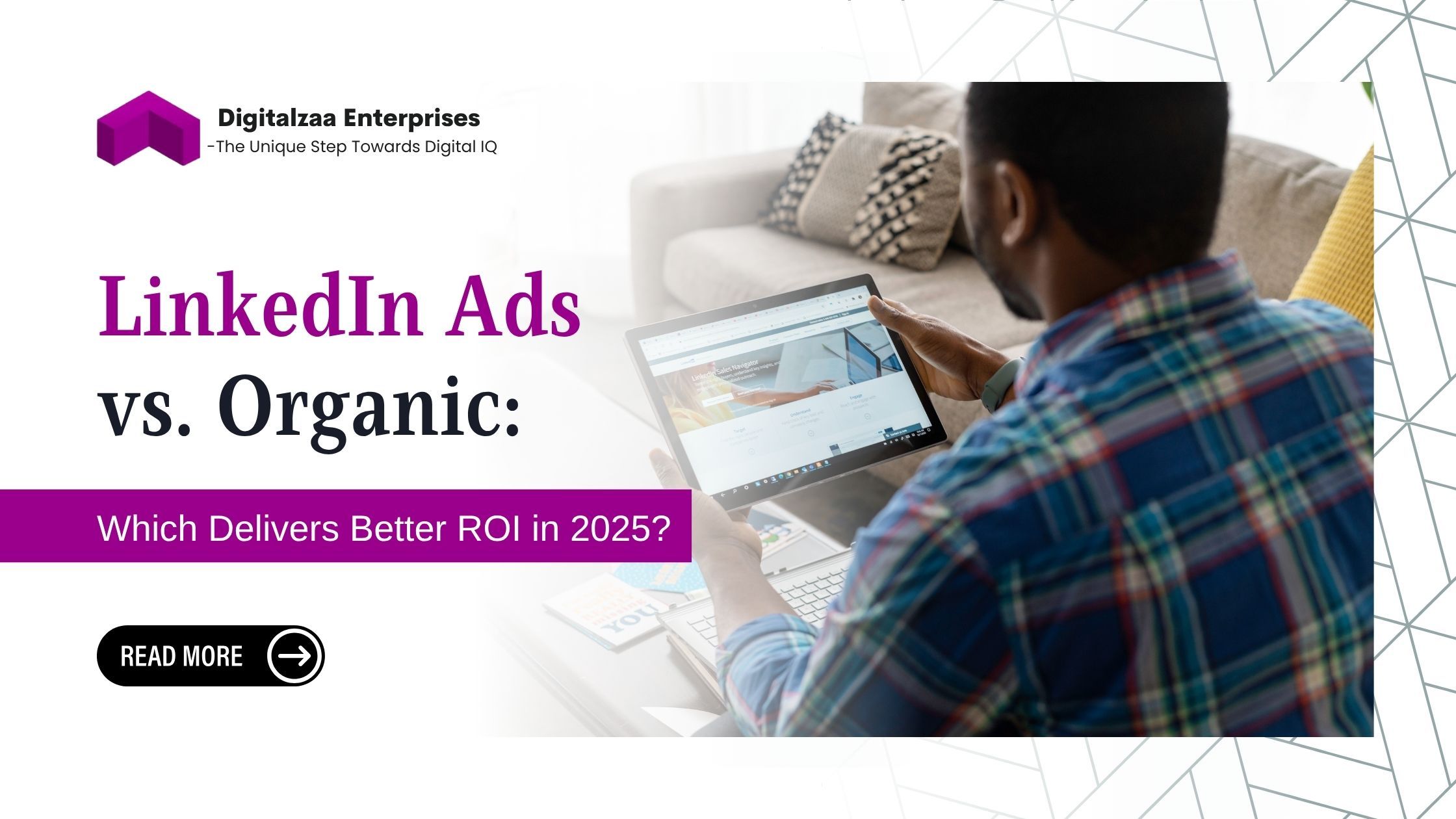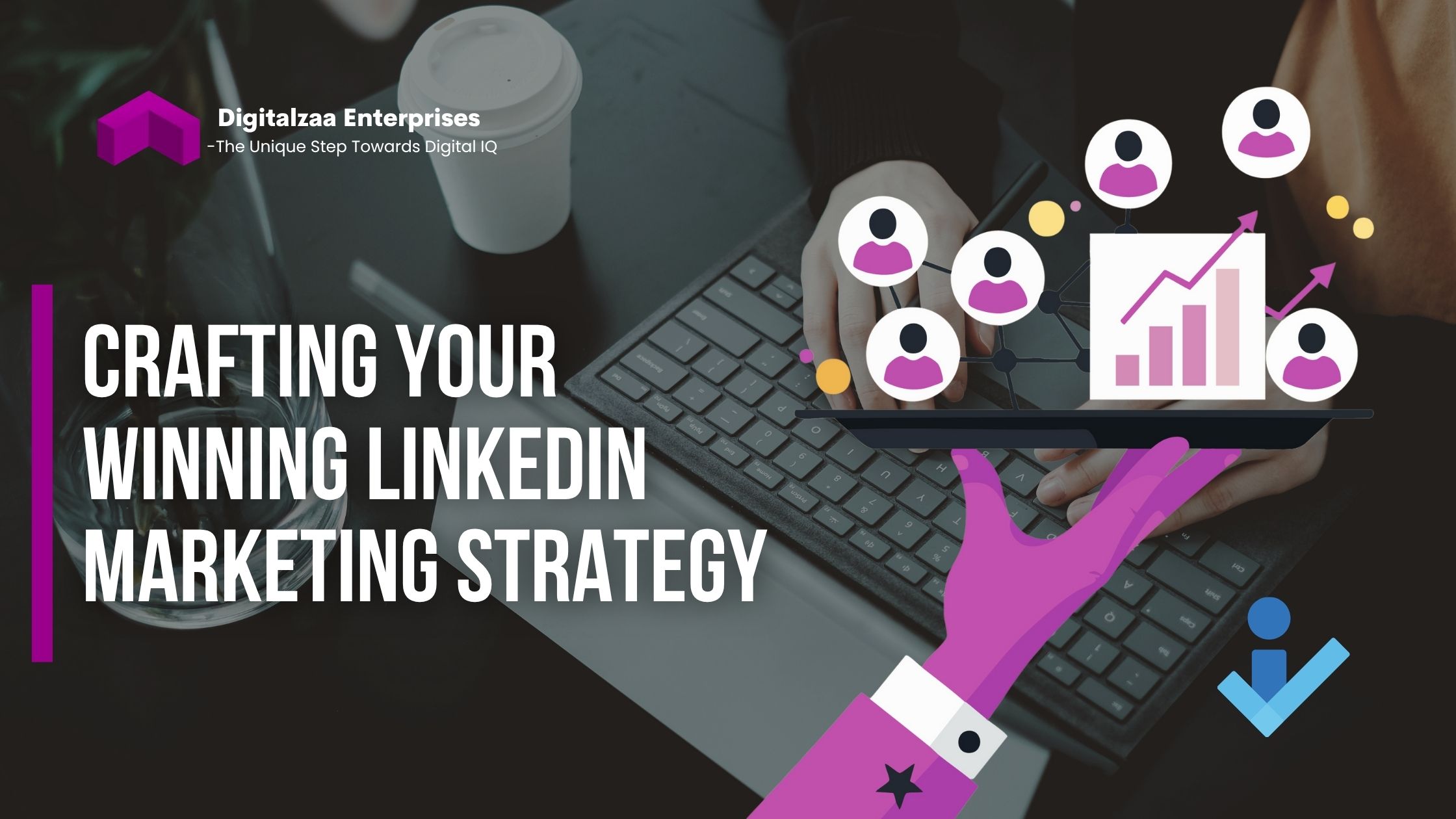LinkedIn Ads vs. Organic: Which Delivers Better ROI in 2025?

In the evolving landscape of B2B marketing, LinkedIn has emerged as the undisputed champion for professional networking and business growth. As we navigate through 2025, marketers face a critical question: Should you invest in LinkedIn Ads or focus on organic LinkedIn marketing? The answer isn't straightforward, but understanding the nuances of each approach will help you craft a winning LinkedIn marketing strategy.
Understanding the LinkedIn Marketing Landscape in 2025
LinkedIn has transformed from a simple networking platform into a sophisticated marketing ecosystem with over 900 million users worldwide. The platform's unique professional environment makes it invaluable for B2B companies, thought leaders, and brands targeting decision-makers. However, choosing between paid and organic strategies requires careful consideration of your goals, budget, and resources.
LinkedIn Ads: The Fast Lane to Visibility
LinkedIn Ads offer businesses immediate visibility and precise targeting capabilities that organic content simply cannot match. With advertising options ranging from sponsored content to message ads, the platform provides multiple touchpoints to reach your ideal audience.
Key Advantages of LinkedIn Ads:
- Precision Targeting: LinkedIn Ads excel at reaching specific professional demographics. You can target users based on job title, industry, company size, seniority level, skills, and even specific companies. This granular targeting ensures your message reaches decision-makers who matter most to your business.
- Immediate Results: Unlike organic content that takes time to build momentum, LinkedIn Ads deliver instant visibility. Your content appears directly in the feeds of your target audience, bypassing the algorithmic challenges that organic posts face.
- Scalability: Paid campaigns can be scaled up or down based on performance and budget. This flexibility allows businesses to test messaging, optimize campaigns, and adjust spending in real-time to maximize returns.
- Measurable ROI: LinkedIn's robust analytics provide detailed insights into campaign performance, including impressions, clicks, conversions, and cost per acquisition. This data-driven approach enables continuous optimization and clear ROI tracking.
The Investment Reality of LinkedIn Ads
However, LinkedIn Ads come with significant costs. The platform is notoriously expensive compared to other social media advertising channels:
- Average cost-per-click (CPC) ranges from $5 to $12
- Cost-per-thousand-impressions (CPM) typically runs between $30 to $80
- Minimum daily budget requirements can strain smaller marketing budgets
- Competition in popular industries drives costs even higher
For businesses with limited budgets, these costs can quickly become prohibitive, making organic LinkedIn marketing an attractive alternative.
Organic LinkedIn Marketing: Building Long-Term Value
Organic LinkedIn marketing focuses on creating valuable content, engaging with your network, and building authentic relationships over time. While it requires patience and consistent effort, the long-term benefits can be substantial.
Key Advantages of Organic LinkedIn Marketing:
- Cost-Effective Growth: Organic content requires no advertising spend, making it accessible to businesses of all sizes. Your investment is primarily time and expertise rather than a monetary budget.
- Authentic Relationship Building: Organic engagement fosters genuine connections with your audience. Comments, shares, and direct conversations build trust and credibility that paid ads struggle to achieve.
- Thought Leadership Positioning: Consistently sharing valuable insights, industry knowledge, and original perspectives establishes you or your brand as a trusted authority in your field. This reputation compounds over time and opens doors to opportunities that money cannot buy.
- Sustainable Long-Term Results: While organic growth is slower, it creates lasting value. Quality content continues to attract engagement months after publication, and a strong personal or company brand generates ongoing leads without additional investment.
- Algorithm Favorability: In 2025, LinkedIn's algorithm increasingly rewards authentic engagement and valuable content. Posts that spark meaningful conversations receive greater organic reach, potentially matching or exceeding paid visibility.
The Challenges of Organic LinkedIn Marketing
Organic strategies require significant commitment and patience:
- Building meaningful reach takes 6-12 months of consistent posting
- Algorithm changes can dramatically impact visibility overnight
- Content creation demands expertise, time, and creativity
- Results are less predictable and harder to scale quickly
- Standing out in increasingly crowded feeds requires exceptional content
Comparing ROI: The Numbers That Matter
When evaluating ROI, consider both quantitative and qualitative metrics. LinkedIn Ads typically show faster initial returns but higher costs, while organic strategies build compounding value over time.
LinkedIn Ads ROI Metrics:
- Immediate lead generation: 3-5% conversion rates for well-targeted campaigns
- Cost per lead: $50-$150 depending on industry and competition
- Time to results: Within days of launching campaigns
- Scalability: Highly scalable with increased budget
- Brand awareness: Rapid reach expansion with consistent investment
Organic LinkedIn Marketing ROI Metrics:
- Cost per lead: Essentially zero monetary cost after initial investment
- Time to results: 3-6 months for meaningful traction
- Engagement quality: Higher trust and relationship depth
- Long-term value: Content and connections appreciate over the years
- Thought leadership: Priceless brand authority that attracts opportunities
Crafting Your Winning LinkedIn Marketing Strategy

The most effective approach in 2025 isn't choosing between LinkedIn Ads and organic marketing, it's strategically combining both for maximum impact.
When to Prioritize LinkedIn Ads:
- Launching new products or services requiring immediate visibility
- Promoting time-sensitive offers, events, or webinars
- Targeting specific accounts in ABM (account-based marketing) campaigns
- Testing messaging and audience segments before organic investment
- Scaling lead generation quickly with available budget
- Entering new markets where you lack organic presence
When to Prioritize Organic LinkedIn Marketing:
- Building long-term brand authority and thought leadership
- Nurturing existing relationships and community engagement
- Operating with limited marketing budgets
- Creating sustainable, compounding growth trajectories
- Differentiating through authentic expertise and insights
- Developing trust-based relationships with high-value prospects
The Hybrid Approach: Best of Both Worlds
Smart marketers in 2025 are implementing integrated strategies that leverage the strengths of both approaches:
- Content Amplification: Create exceptional organic content, then use LinkedIn Ads to amplify your best-performing posts to wider audiences. This combines authentic value with strategic reach.
- Retargeting Warm Audiences: Build organic engagement first, then retarget engaged users with LinkedIn Ads for specific offers. This approach converts warm prospects more efficiently than cold advertising.
- Testing and Optimization: Use paid campaigns to test messaging, identify high-performing content themes, then replicate those insights in organic content strategies.
- Funnel Integration: Deploy LinkedIn Ads for top-of-funnel awareness and lead generation, while using organic content for middle and bottom-funnel nurturing and relationship building.
Making Your Decision: Key Considerations
Your optimal LinkedIn marketing strategy depends on several factors:
- Budget Availability: If you have significant marketing budget, LinkedIn Ads accelerate results. Limited budgets benefit more from organic investment.
- Time Horizon: Need results within weeks? Choose LinkedIn Ads. Planning for sustainable growth over quarters and years? Prioritize organic.
- Internal Resources: Do you have skilled content creators and consistent time for engagement? Organic strategies thrive. Prefer outsourcing and quick deployment? Paid ads may suit you better.
- Competition Level: In saturated markets, LinkedIn Ads provide necessary visibility. In niche industries, organic thought leadership can dominate.
- Business Goals: Lead generation and event promotion favor paid strategies. Brand building and authority positioning benefit from organic approaches.
Measuring Success in 2025
Regardless of your chosen approach, establish clear metrics aligned with business objectives:
- Lead quality and conversion rates, not just quantity
- Engagement depth (meaningful comments vs. superficial likes)
- Cost per customer acquisition across entire funnel
- Lifetime value of acquired customers
- Brand sentiment and share of voice in your industry
- Pipeline influence and sales cycle impact
The Verdict: Which Delivers Better ROI?

The truth is that neither LinkedIn Ads nor organic LinkedIn marketing inherently delivers better ROI it depends entirely on your specific situation, goals, and execution quality.
- LinkedIn Ads deliver superior ROI when: You need rapid results, have adequate budget, target well-defined audiences, and can optimize campaigns based on performance data.
- Organic LinkedIn marketing delivers superior ROI when: You're building for long-term value, have expertise to share, can commit to consistent content creation, and prioritize authentic relationship building.
- The hybrid approach delivers optimal ROI when: You strategically combine both methods, using paid ads for acceleration and testing while building organic authority for sustainable growth.
Conclusion
As we progress through 2025, the most successful LinkedIn marketers aren't choosing between ads and organic, they're thoughtfully integrating both into comprehensive strategies. Start by assessing your current position, resources, and goals. If you're building from scratch, begin with organic content to establish credibility, then layer in LinkedIn Ads to accelerate growth. If you need immediate results, launch targeted ad campaigns while simultaneously building organic presence for long-term sustainability.
Remember, the best LinkedIn marketing strategy is one that aligns with your business objectives, leverages your unique strengths, and adapts based on measurable results. Whether you choose LinkedIn Ads, organic LinkedIn marketing, or a combination of both, consistency, quality, and strategic thinking will ultimately determine your success.


